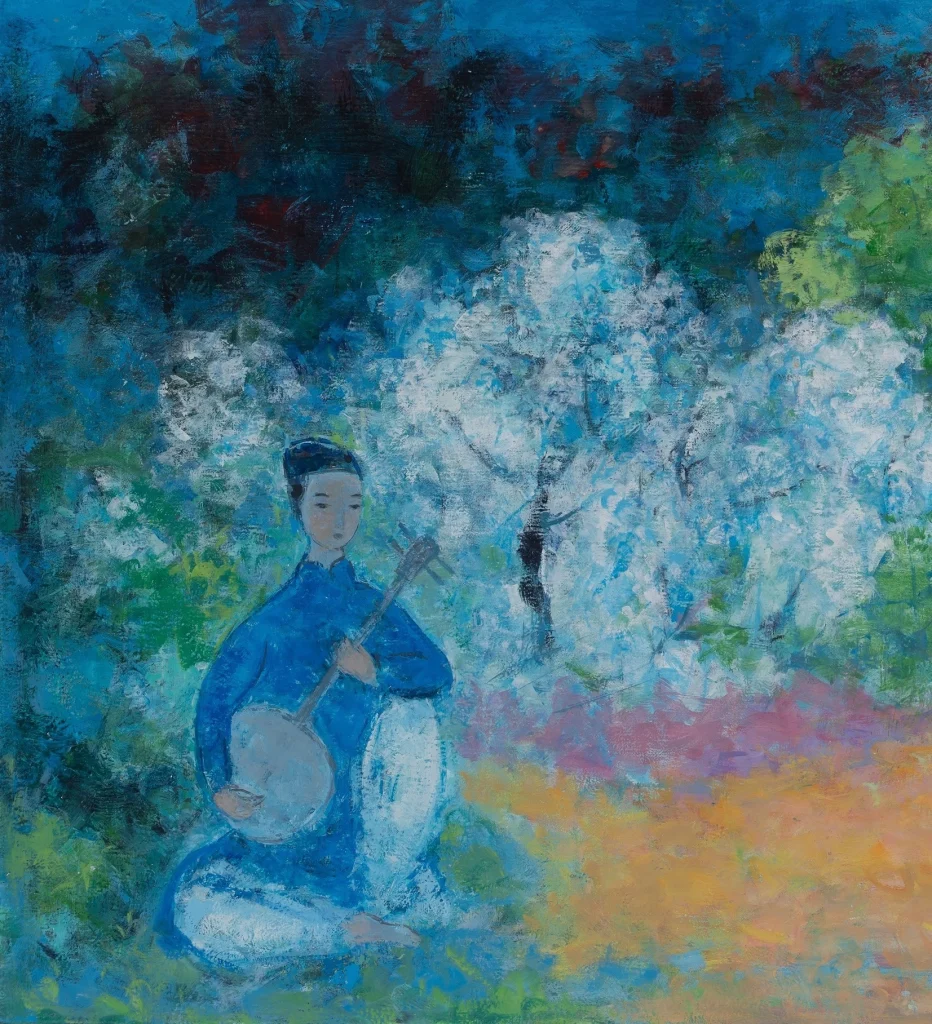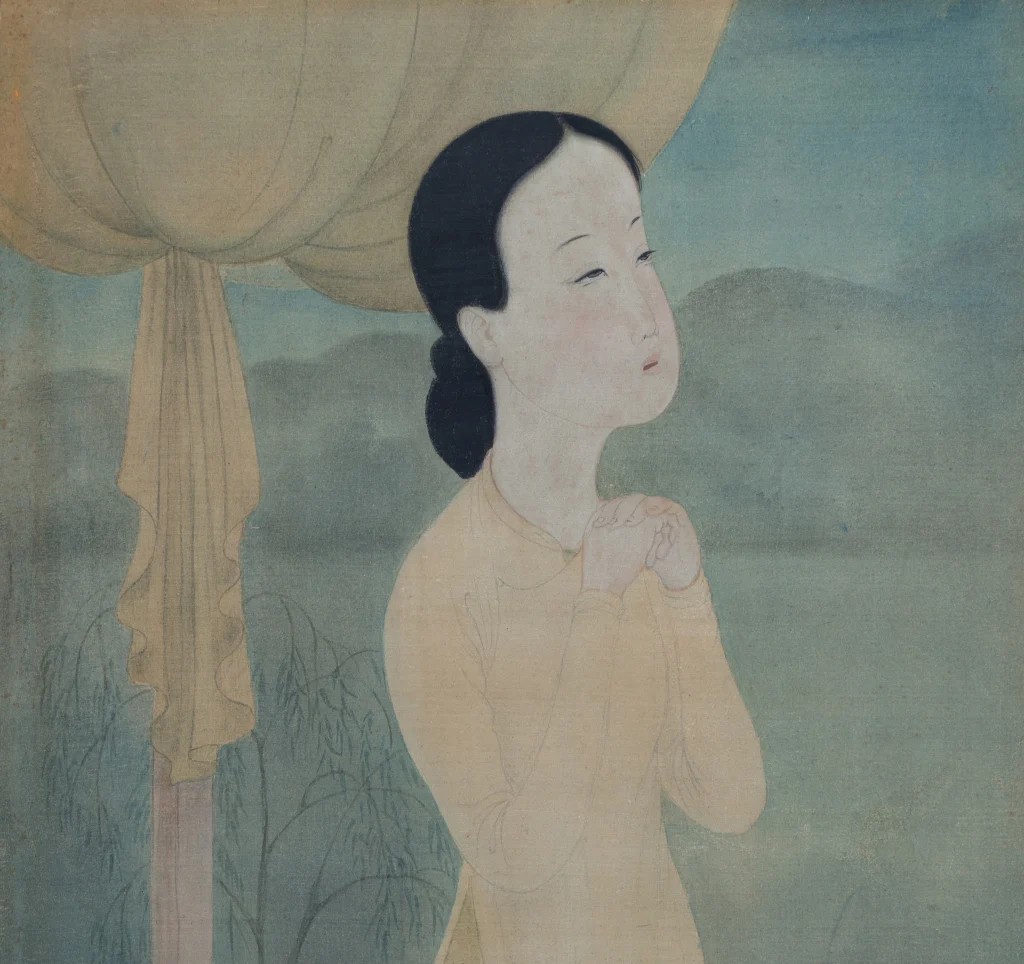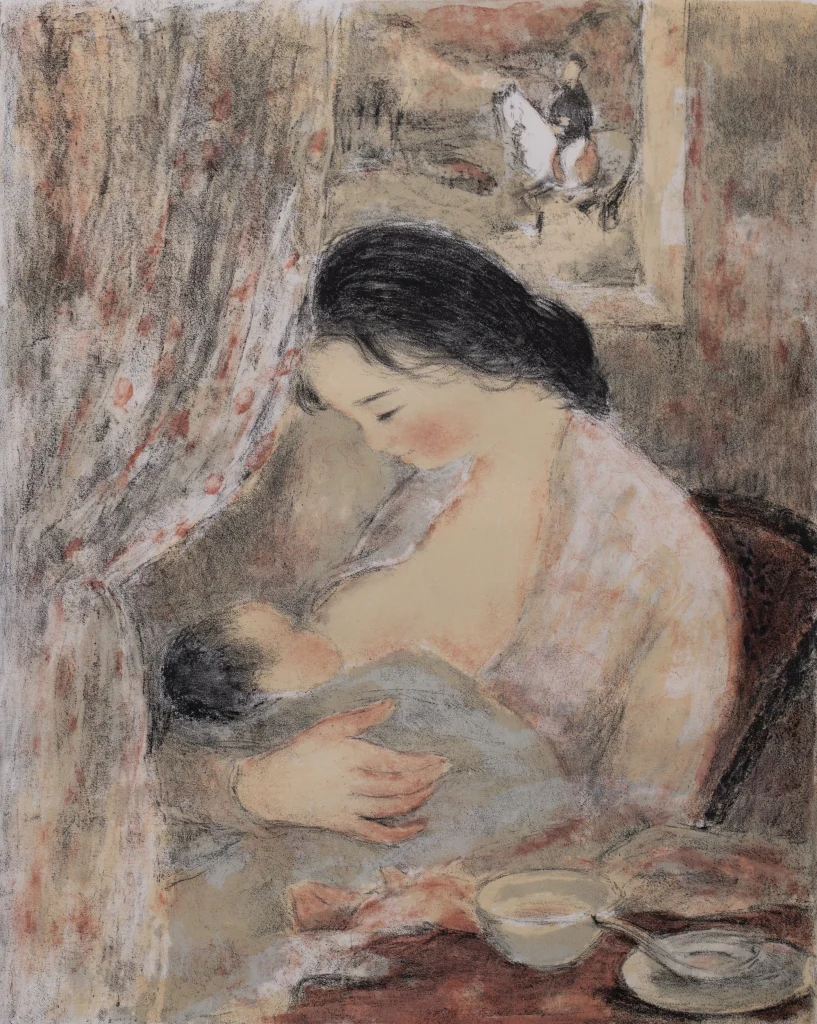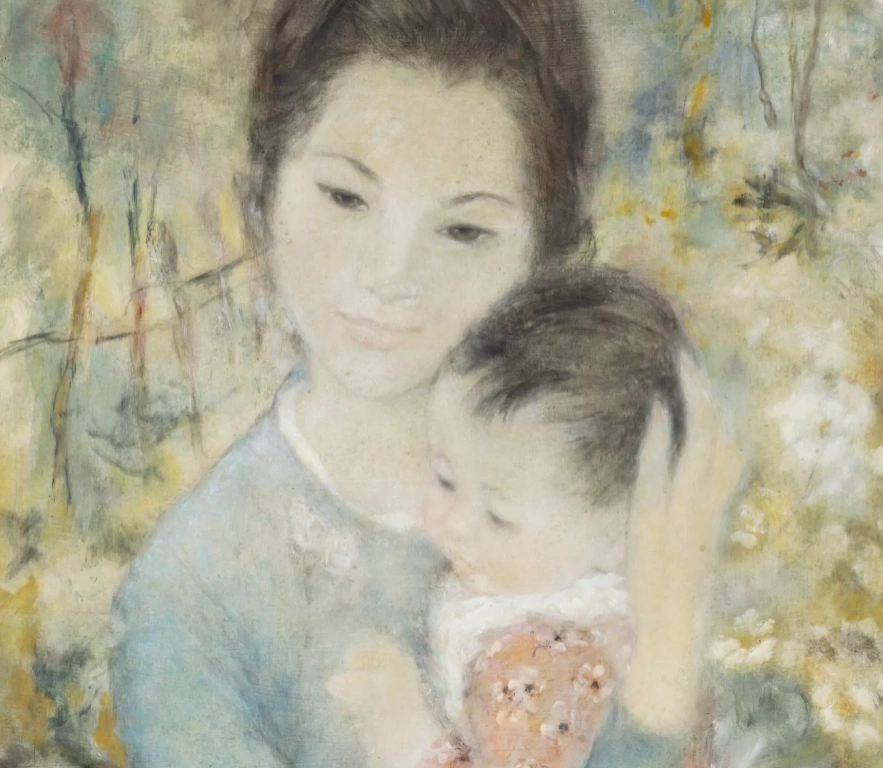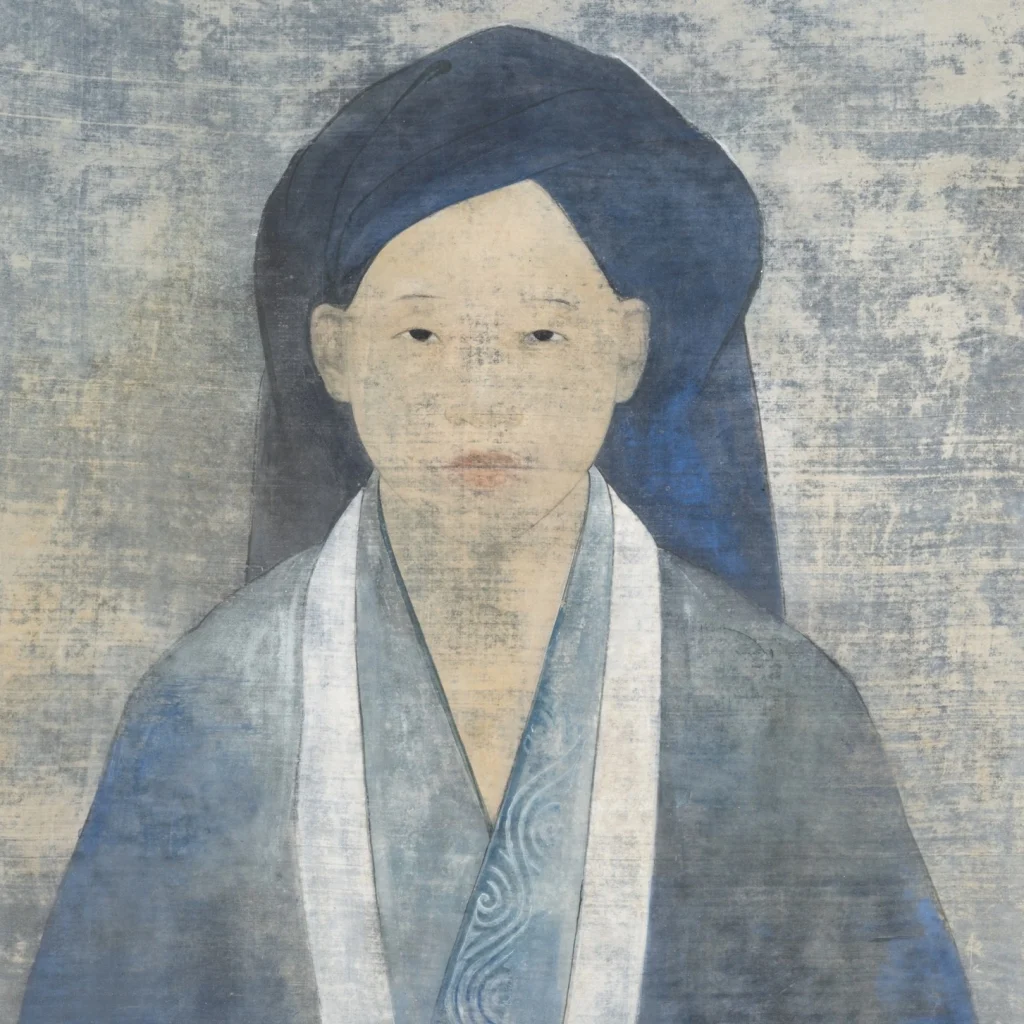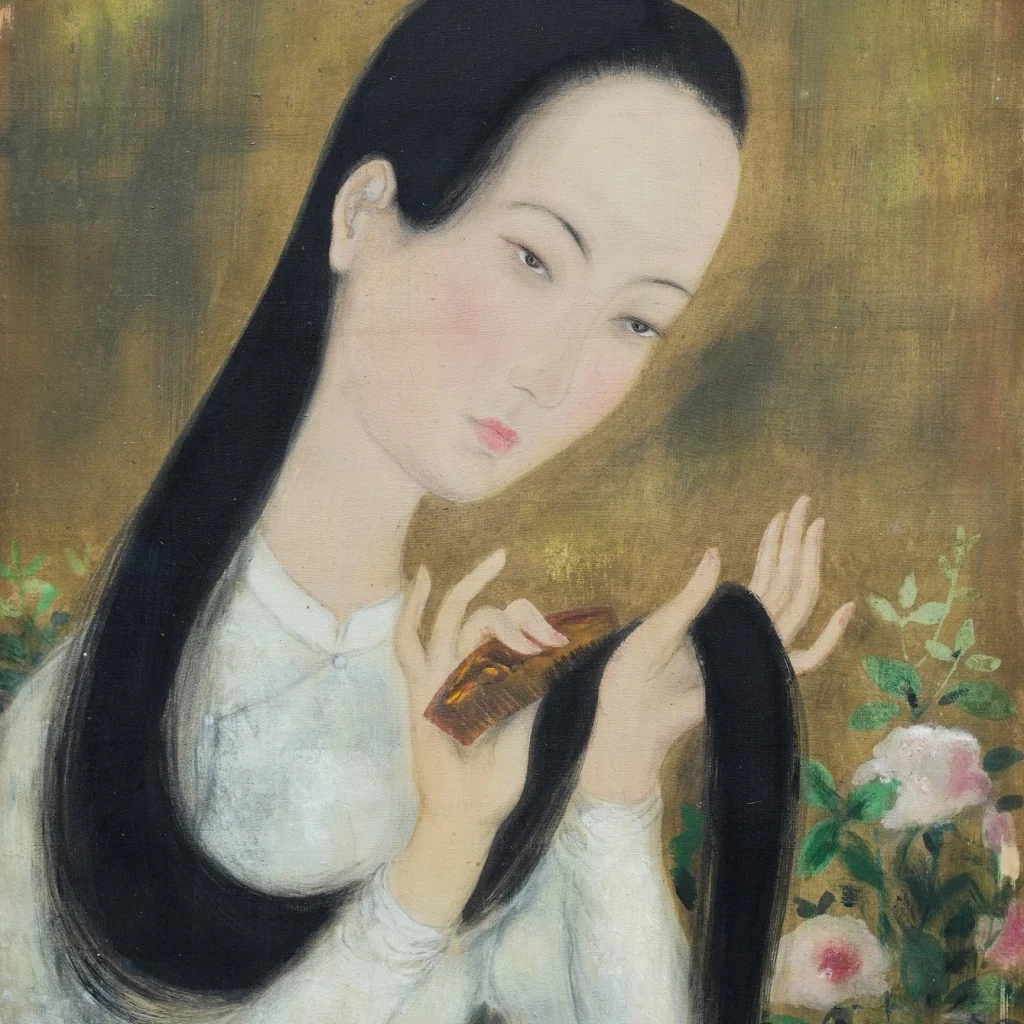Nguyễn Khang, also known as Nguyễn Văn Khang, was born in Hanoi in 1911. He graduated from the Ecole des Beaux-Arts de l’Indochine in 1935, and his artistic journey began thereafter. In 1937, he co-founded the FARTA (Foyer de l’Art Annamite) and travelled to France to participate in the Paris Universal Exhibition alongside the renowned lacquer artisan Đinh Văn Thành (1898-1971).
In 1949, Nguyễn Khang assumed the role of principal at the Resistance Fine Arts School in Inter-Zone X. Subsequently his career led him to China, where he pursued further studies from 1951 to 1957. Upon his return to Vietnam, he became a permanent member of the Vietnam Fine Arts Association, from 1957 to 1983. In 1957, he was appointed vice-principal of the Vietnam College of Fine Arts, and from 1962 to 1974, he became the principal. The scope of his leadership extended beyond the domain of the arts. In 1969, he presided over the funeral committee for President Hồ Chí Minh. His contributions to the realms of literature and art were recognised in 2000 with the prestigious Hồ Chí Minh Prize.
Vietnam’s lacquer tradition evolved into a vibrant painting medium, reflecting the country’s complex history of nation-building from the 1930s. Celebrated as a master of lacquer painting, Nguyễn Khang is distinguished by the intellectual and refined elegance of his creations. He pioneered an innovative technique that involved finely grinding gold and silver leaf into powder and evenly distributing it across the lacquer surface to achieve a distinctive effect. Once the lacquer dried, a delicate layer of dark reddish-brown or black lacquer was applied and meticulously polished to perfection. He favoured visuals on this sombre black background, creating a soft, subtle shimmer and a profound sense of depth, suggesting an influence from Japanese lacquerware, particularly the Rimpa School and its revival models from the late 19th and early 20th centuries.
Nguyễn Khang’s elaborate techniques in lacquer art entailed the combination of raw lacquer with various types of clay or other specific materials, utilising intricate engraving techniques and the gradual building up of layers until the desired shape was achieved on the surface of the piece. This method draws upon the techniques of painting and embossing statues in Vietnamese temples, demonstrating his commitment to pushing the boundaries of traditional art forms. Meticulous attention to detail and innovative use of materials set his works apart, establishing his unique signature in the field of lacquer art.
Nguyễn Khang’s artistic philosophy is deeply rooted in his love for Vietnamese culture and a desire to reflect the essence of Vietnamese life through his art. Over the course of his career, Nguyễn Khang created around 50 lacquer works of various sizes, focusing primarily on figures, depicting them with a refined aesthetic that expresses a profound respect for their daily lives. His interest in philosophical anecdotes that emphasise positive values, such as career success and contentment in labour reflects his belief in the importance of finding beauty and meaning in ordinary experiences.
His works pays tribute to Vietnamese heritage by drawing inspiration from traditional art forms such as the Đông Hồ woodblock prints, which often depict folktales and villagers’ everyday lives. His commitment to preserving and celebrating Vietnamese culture while innovating within traditional art forms is evinced in his robust and natural characters, imbued with elements of Vietnamese folk art.
An artistic journey spanning from the 1930s to the late 1980s, Nguyễn Khang’s notable works include ‘The Scholar Returns Home in Glory’ (1942), ‘Fishing under Moonlight’ (1942-1943), ‘Golden and Silver Trees’ (1942-1943), ‘The Horse Herders Family’ (1958), ‘Peace and Friendship’ (1958), and ‘Marching Through the Stream’ (1962). These pieces are widely regarded as exemplifying his distinctive style.
Nguyễn Khang passed away in 1989, leaving a significant legacy of artworks and research that greatly advanced Vietnamese lacquer painting. His enduring influence stands as a testament to his dedication to the arts and his significant contributions to both education and cultural preservation.
![[Đấu giá tại Bonhams] Bài viết về họa sĩ Nguyễn Khang từ nhà đấu giá Bonhams](https://vietartview.com.vn/wp-content/uploads/2025/03/Danh-ca-dem-trang-3-scaled.webp)
Fishing Under the Moonlight
In 1942-1943, artist Nguyễn Khang created two masterpieces, ‘Fishing Under the Moonlight’ and ‘The Scholar Returns Home in Glory’, which are now part of the Vietnam Fine Arts Museum’s collection. These paintings exemplify his remarkable technical skill and artistic style. Building on the success of ‘Fishing Under the Moonlight’, Nguyễn Khang created several variations, each with a similar composition featuring additional characters and details to enrich the scene.
The painting ‘Fishing Under the Moonlight’ presented in this sale is a variation created by the artist in the 1980s, as confirmed by his family. The original rendition portrays a semi-realistic scene of Vietnamese fishermen engaged in nocturnal fishing activities, featuring two individuals navigating the boat with a paddle, while a third man at the foreground fishes with a net and two others at the lower right of the composition crouching to collect fish, snails, and crabs manually. In this later version, an additional boat carrying two fishermen is depicted on the right behind the primary vessel, also engaged in net fishing. The presence of these additional characters and the vividness of the details convey a sense of dynamism and activity, effectively portraying the enthusiasm and dedication of the fishermen at work.
The unique blend of Western art academic principles and Vietnamese folk elements in the depiction of the characters sets this work apart. The intricate engravings, rich in decorative details, are deeply embedded into the surface of the painting, enveloping the figures and seamlessly flowing across the lacquered background. There is a harmonious interplay between the engravings and the bold colour blocks that are a vibrant red and a lustrous gold. The night sky and dark water are rendered in a deep, glossy lacquer, providing a rich dark background. The skilful application of gold stands out brilliantly against this polished surface, creating a striking contrast that captivates the viewer’s eye. The realism of the painting is achieved through the use of shading on the figures, the intricate depiction of fabric movement and the fishnet, and the creation of an illusion of three-dimensional space on a two-dimensional canvas. These characteristics reflect Western artistic influences, attributed to the rigorous technical training received at the École des Beaux-Arts de l’Indochine.
In contrast, elements of Vietnamese artistic representation are evident in the more primitive, unrealistic aspects of this painting. Nguyễn Khang’s stylised depiction of figures and the subject matter, reminiscent of pre-colonial folk art, such as woodblock prints from the Đông Hồ craft village and water puppetry, exhibits qualities that are redolent of such styles. In terms of composition, a parallel may be drawn between this work and the renowned woodblock print ‘Wedding of Rats’. Both pieces are divided into two halves, and the unnatural and folk-like head poses in this painting bear a striking resemblance to those found in the poses of the rats depicted in the woodblock print.
Another folk art form that has clearly influenced this painting is water puppetry. The human figures in ‘Fishing under the Moonlight’ are depicted wearing loincloths and headscarves with a colour scheme of red, black, and yellow, closely aligning with the outfits of certain water puppets. In addition, the artist, Nguyễn Khang, chose to depict one of the four common rural occupations (fisherman, woodcutter, plowman, and herdsman) that are characters frequently seen in puppetry performances.
![[Đấu giá tại Bonhams] Bài viết về họa sĩ Nguyễn Khang từ nhà đấu giá Bonhams](https://vietartview.com.vn/wp-content/uploads/2025/03/Nhung-nguoi-chan-ngua-scaled.webp)
Horse Herders
The painting ‘Horse Herders’, circa 1980s, presented in this auction is one of a series by artist Nguyễn Khang. This painting, like ‘Fishing by Moonlight’, features bare-chested men in red loincloths and headscarves. The meticulous depiction of the male figures conveys both depth and decisiveness, despite the softness that characterises the artist’s work. The horse herders depicted in various poses demonstrate their proficiency in handling the six white horses. The black lacquered surface of the painting conveys the story in a layered triptych space. The contrast of the two main colours – red and finely ground, bright gold – makes the painting both easily understandable and visually captivating.
According to the artist’s family, the first painting in the ‘Horse Herders’ series, titled ‘The Horse Herders Family’, was created in 1958, shortly after Nguyễn Khang’s return from China. Following a period of cultural exchange in China that was both educational and inspiring, Nguyễn Khang returned to Vietnam with a renewed artistic vision. During his time in China, he had been exposed to a wealth of traditional Chinese art, and this period of cultural exchange surely left a lasting impression on Nguyễn Khang, influencing his subsequent works.
This series of paintings stands out as a testament to Nguyễn Khang’s artistic evolution and his exposure to diverse cultural influences. One of the most intriguing parallels can be drawn between Nguyễn Khang’s ‘Horse Herders’ and Zhao Mengfu’s ‘Bathing Horses’ in the collection of the Palace Museum in Beijing. Zhao Mengfu (1254-1322) was a renowned Chinese painter and calligrapher of the Yuan dynasty, celebrated for his elegant brushwork and contributions to the literati painting tradition. Both paintings depict horses and their herders capturing the dynamic interaction between humans and animals. The serene natural settings in these works emphasise the harmonious bond between humans and horses, a theme that resonates deeply in both Vietnamese and Chinese cultures. This shared motif highlights the universal appreciation for the relationship between man and nature, and the tranquillity that such scenes evoke. Nguyễn Khang’s scrupulous attention to detail and innovative use of lacquer techniques bring a unique vibrancy to ‘Horse Herders’, while Zhao Mengfu’s elegant brushwork and fluid lines in ‘Bathing Horses’ showcase the grace and movement of the horses. The similarities in subject matter and the serene ambiance of both paintings suggest a fascinating dialogue between the two artists, reflecting their mutual respect for the natural world and its depiction in art.
The ‘Horse Herders’ series is also part of Nguyễn Khang’s series on labour. With this theme, Nguyễn Khang explored nearly all the possibilities of composition and figure depiction. Horses usually dominate the composition, tended by one or more figures. Decorative details including reeds and water waves were also illustrated. In other paintings with similar compositions, he added fish under rippling water or clusters of flowers among the reeds. These works were given different names such as ‘Fat Horses and Fragrant Flowers’ or ‘The Horse Herders Family’. While they may initially appear to be variations of the same work, each piece is, in fact, a unique creation, with the artist modifying details to align with the specific title. For a rare and refined variant of this subject, see ‘Horse Breeder’ in the Quang San Art Museum collection; and ‘The Horse Herders Family’ in the Nguyễn Khang family collection.
BONHAMS CORNETTE DE SAINT CYR WOULD LIKE TO THANK MS BÙI HOÀNG ANH, DIRECTOR OF VIET ART VIEW, FOR HER RESEARCH AND CONTRIBUTION TO THIS ARTICLE


